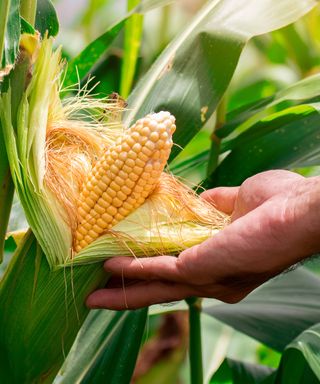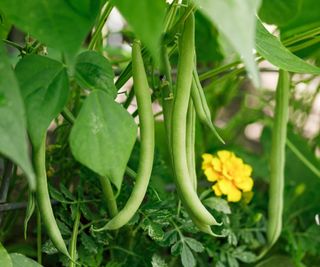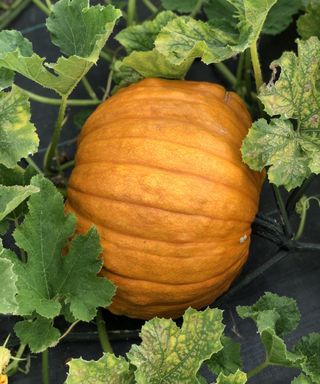This month marks an ideal time to start a long list of crops. The soil is warm and moist enough for direct sowing, while indoor-grown seedlings can be transplanted once the risk of frost has passed, and heat-loving vegetables can begin under covers.
I've always found May to be an exciting time in the vegetable garden, though it can feel like a balancing act. You're simultaneously planting vegetables, sowing seeds, keeping an eye out for pesky slugs that might nibble on seedlings, and battling weeds as they emerge. It can be hectic, but it's a delightful feeling when the plot comes alive again to welcome the new season.
What vegetables are best planted in May?
In your backyard veggie patch, May offers opportunities to plant and sow many vegetables. Many of the vegetables that could be planted in April can still be sown this month.
Crops like chives, kale, broccoli, zucchini, and cauliflower can still make it onto May's spring gardening list, while beets, carrots, and radishes can be sown successively for extended harvests. In addition to the crops listed above, here are 7 other excellent crops you can plant in your garden in May:
1. Corn

Planting corn in May will depend on your climate and the frost-hardiness zone. You can sow corn indoors about two weeks before the last frost date, which might mean needing to start seeds in a greenhouse or on a warm windowsill this month.
Indoor-started corn should be planted into large modules or individual pots and then transplanted once the risk of frost has passed. If you live in a warmer climate, corn can be started outdoors when temperatures stay above 60°F - below this, corn will struggle to germinate.
When planting corn, arrange them in a square formation to aid pollen transfer and ensure you get the best corn yields.
2. French Beans

If you've planned to grow French beans this year, May might be the ideal time to plant them, whether they're bush or pole varieties. French beans started indoors can be transplanted outdoors this month once the risk of frost has passed, or beans can be directly sown outdoors when the soil temperature reaches at least 60°F.
In addition to French beans, black beans and soybeans, if you're looking to try a more unusual legume crop, can also be sown outdoors in May. Adding a nitrogen-fixing inoculant when sowing beans can help you get sturdier plants, and soaking the beans in water beforehand can improve germination rates.
3. Kohlrabi

This fast-growing vegetable is another good choice for successive sowings, with regular outdoor sowings possible from May through midsummer.
As interest in tubers grows, so does the popularity of growing turnips, which can be purple, green, or white and eaten raw or cooked. Thinly sow the seeds into drills and keep adequately moist, spacing seedlings 8-12 inches apart as they grow.
Young seedlings need protection from slugs and snails, which often nibble on tender shoots as they emerge from the ground.
4. Peas

There are different types of peas you can grow, from those requiring shelling to those with edible pods like snow peas or snap peas.
To plant peas, you can start pea seedlings indoors to get a head start, or directly sow peas into the ground once the soil warms up and the risk of frost has passed. If the soil temperature is below 45°F, refrain from sowing peas as they won't germinate well in cold, damp soil.
All types of peas can be sown outdoors in May. Plant them 1-2 inches deep, spaced 2-3 inches apart - depending on the variety size - in rows spaced at least 12 inches apart. Keep the soil moist but not overly wet, as this can lead to pea rot, and quickly set up supports for the peas after planting.
5. Pumpkins

If you're considering growing pumpkins this year, May is the last window for planting them to allow for ample development time.
As part of spring greenhouse planning, pumpkin seeds can be started indoors in individual pots and then transplanted outdoors in June. Alternatively, pumpkin seeds can be sown outdoors in the latter half of May, at least two to three weeks after the last frost, and when the soil has warmed up to 70°F.
There are many varieties of pumpkins you can grow, whether for Halloween displays or recipes, and you might even try growing a giant pumpkin - though you'll want to start sowing early in the month to give the pumpkins ample time to grow big. Besides pumpkins, May is also a good time to start sowing cucumbers and planting squash.
6. Rutabagas

Rutabagas, also known as daikon or Swedish turnips, are a cruciferous vegetable grown for their large, oblong-shaped tubers, which can be yellow or purple inside.
This crop is best sown directly into the soil in spring, making mid-May to late May an ideal time for planting rutabagas in many climates. Seeds should be sown about half an inch deep in rows spaced 15-18 inches apart and thinned as they develop to a spacing of 9 inches.
Rutabagas need to keep the soil moist, so pay attention to when to water the plants, and maintain soil moisture during the summer as irregular irrigation can cause root splitting. This crop may take up to six weeks to reach full size, with harvesting possible from late summer when mature tubers reach a diameter of 4-6 inches.
7. Spring onions

Spring onions and spring onions are very fast-growing vegetables, taking less than eight weeks from sowing to harvesting.
These allium crops are grown for their stems - some types for their small bulbs - used in salads, stir-fries, and garnishes. They require little space and are perfect for successive sowings every three weeks, which can be planted between other crops. They also make great companion plants; for example, I sow them alongside carrots to protect them from pesky carrot flies.
Scallion seeds should be directly sown into the soil, into shallow drills less than an inch deep. Thin out the plants as they develop, leaving about 2 inches of space between each, and you can even eat the thinned-out seedlings.
FAQs
Can you plant tomato seeds in May?If you're planning to grow tomatoes but haven't sown seeds yet, early May might be the last chance to plant them. Choose a fast-growing tomato variety; cherry tomatoes mature the fastest, and bush varieties produce fruit quicker than vine or sprawling tomatoes.









